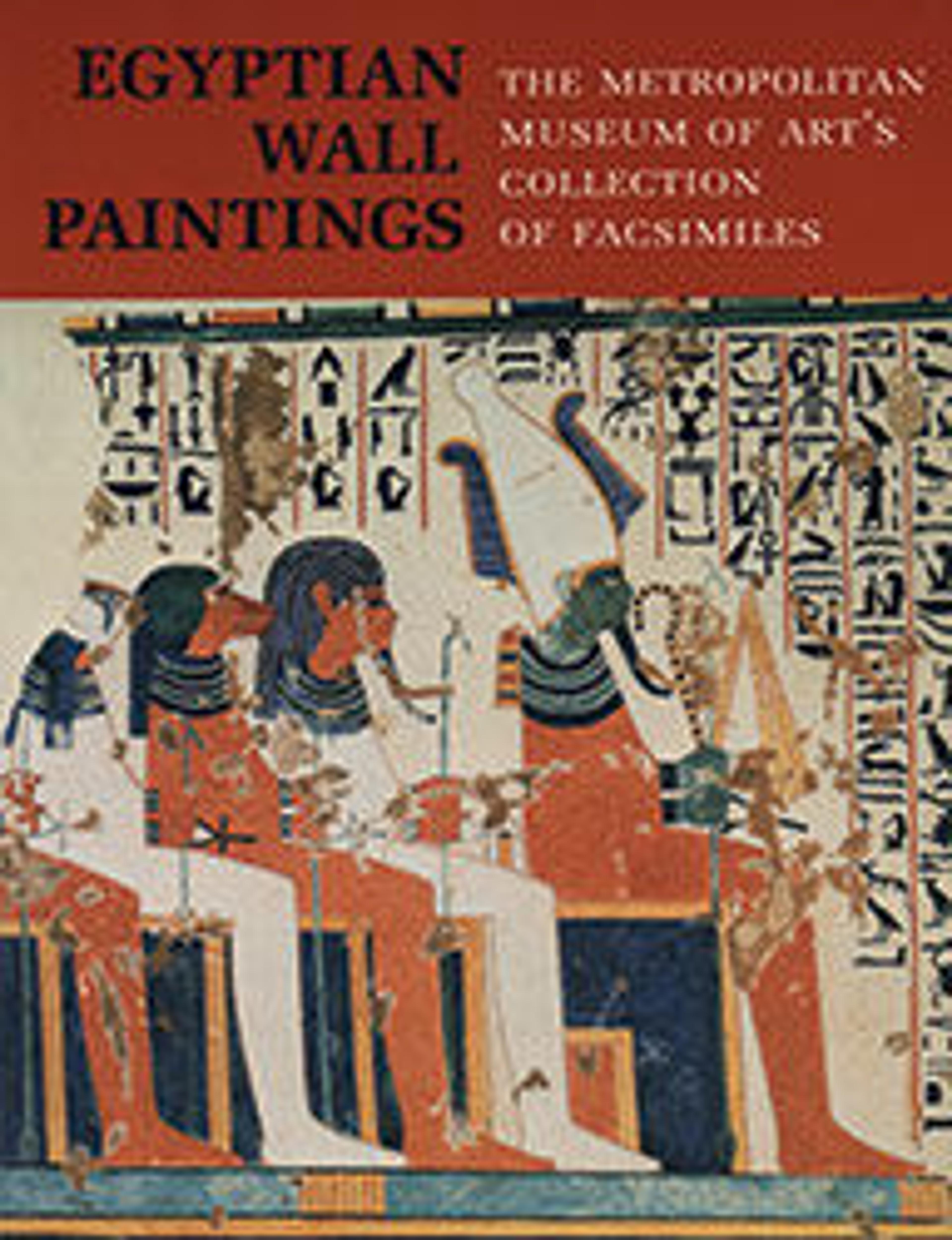Dragging a Statue of Thutmose I
Thutmose I is represented here as a statue, as indicated by the men pulling him on a sledge. His black skin was initially understood to represent the ebony wood from which the statue was possibly made, but it most likely relates to the king’s deified state. Cults were established to worship kings during their reign. The cult of Thutmose I persisted for centuries after his death, a rare phenomenon, and this statue of the king is at the center of a scene depicting offerings and rites honoring him. Royal figures are sometimes depicted with a dark complexion, as the color black represents rebirth and regeneration–like the black soil of the Nile Valley.
Artwork Details
- Title: Dragging a Statue of Thutmose I
- Artist: Norman de Garis Davies (1865–1941)
- Period: Twentieth Century; original New Kingdom, Ramesside
- Dynasty: Dynasty 19
- Reign: reign of Seti I
- Date: 1911; original ca. 1294–1279 B.C.
- Geography: From Egypt, Upper Egypt, Thebes
- Medium: Tempera on paper
- Dimensions: Facsimile H. 64 x W. 75 cm (25 3/16 x 29 1/2 in.); Framed: H. 67.9 x W. 76.8 cm (26 3/4 x 30 1/4 in.); Scale. 1:1
- Credit Line: Rogers Fund, 1915
- Object Number: 15.5.17a
- Curatorial Department: Egyptian Art
More Artwork
Research Resources
The Met provides unparalleled resources for research and welcomes an international community of students and scholars. The Met's Open Access API is where creators and researchers can connect to the The Met collection. Open Access data and public domain images are available for unrestricted commercial and noncommercial use without permission or fee.
To request images under copyright and other restrictions, please use this Image Request form.
Feedback
We continue to research and examine historical and cultural context for objects in The Met collection. If you have comments or questions about this object record, please complete and submit this form. The Museum looks forward to receiving your comments.
